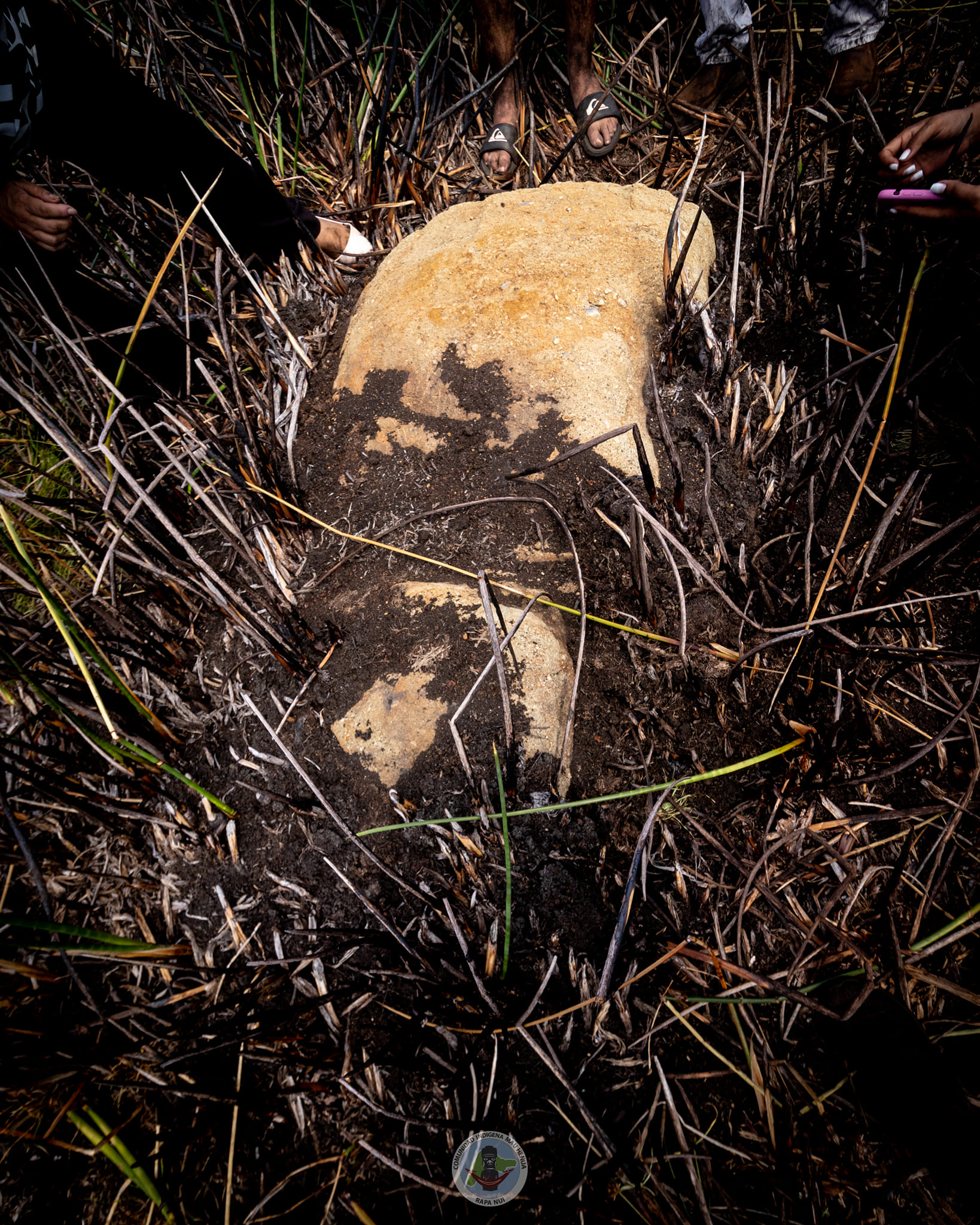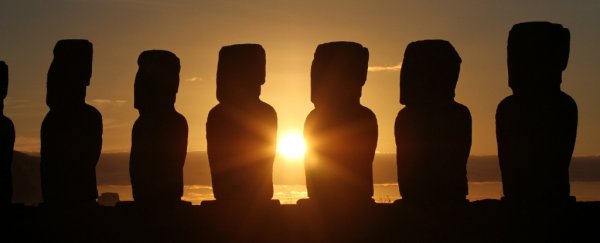A new Moai, one of Easter Island's iconic statues, was found in the bed of a dry laguna in a volcano crater, the Indigenous community that administers the site on the Chilean island has said.
"This Moai has great potential for scientific and natural studies, it's a really unique discovery as it's the first time that that a Moai has been discovered inside a laguna in a Rano Raraku crater," said the Ma'u Henua Indigenous community in a statement on Tuesday.
The statue was found on February 21 by a team of scientific volunteers from three Chilean universities collaborating on a project to restore the marshland in the crater of the Rano Raraku volcano.

Several Moai in that area suffered charring in an October forest fire on the island, which is also known as Rapa Nui and lies some 3,500 kilometers (2,175 miles) off the west coast of Chile.
"This Moai is in the center of a laguna that began drying up in 2018," Ninoska Avareipua Huki Cuadros, director of the Ma'u Henua Indigenous community that administers the Rapa Nui National Park, where the volcano is found, told AFP.
"The interesting thing is that, for at least the last 200 or 300 years, the laguna was three meters deep, meaning no human being could have left the moai there in that time," said Huki, who is also the provincial head of the local branch of the national forestry corporation, which is collaborating with the restoration of the marshland.

Moai are distinctive monolithic carved stone figures with elongated faces and no legs that were mostly quarried from tuff, a kind of volcanic ash, at the Rano Raraku volcano.
This Moai is 1.6 meters (5 feet and 3 inches) tall and was found lying down on its side looking at the sky.
It is "full-bodied with recognizable features but no clear definition," said the Ma'u Henua statement, adding that the group is looking for finance to carry out a more profound study on the discovery.
However, Huki said there are "no plans to remove the Moai from where it is."
"You have to ask the whole Rapa Nui community what they want to do with the Moai, and the oldest people want it to remain there," she added.
The Rano Raraku volcano and its Moai are a UNESCO World Heritage Site.
Easter Island was long inhabited by Polynesian people, before Chile annexed it in 1888.
